NUR 2092 Health Assesment Answered Test Bank,GRADED A.
Document Content and Description Below
After completing an initial assessment of a patient, the nurse has charted that his respirations are eupneic and his pulse is 58 beats per minute. These types of data would be: a. Objective. 2. A pati... ent tells the nurse that he is very nervous, is nauseated, and “feels hot.” These types of data would be: a. Subjective. 3. The patient’s record, laboratory studies, objective data, and subjective data combine to form the: a. Data base. 4. When listening to a patient’s breath sounds, the nurse is unsure of a sound that is heard. The nurse’s next action should be to: a. Validate the data by asking a coworker to listen to the breath sounds. 5. The nurse is conducting a class for new graduate nurses. During the teaching session, the nurse should keep in mind that novice nurses, without a background of skills and experience from which to draw, are more likely to make their decisions using: a. A set of rules. 6. Expert nurses learn to attend to a pattern of assessment data and act without consciously labeling it. These responses are referred to as: a. Intuition. 7. The nurse is reviewing information about evidence-based practice (EBP). Which statement best reflects EBP? a. EBP emphasizes the use of best evidence with the clinician’s experience. 8. The nurse is conducting a class on priority setting for a group of new graduate nurses. Which is an example of a first-level priority problem? a. Individual with shortness of breath and respiratory distress 9. When considering priority setting of problems, the nurse keeps in mind that second-level priority problems include which of these aspects? a. Abnormal laboratory values 10. Which critical thinking skill helps the nurse see relationships among the data? a. Clustering related cues 11. The nurse knows that developing appropriate nursing interventions for a patient relies on the appropriateness of the __________ diagnosis. a. Nursing 12. The nursing process is a sequential method of problem solving that nurses use and includes which steps? a. Assessment, diagnosis, outcome identification, planning, implementation, and evaluation 13. A newly admitted patient is in acute pain, has not been sleeping well lately, and is having difficulty breathing. How should the nurse prioritize these problems? a. Breathing, pain, and sleep 14. Which of these would be formulated by a nurse using diagnostic reasoning? a. Diagnostic hypothesis 15. Barriers to incorporating EBP include: a. Nurses’ lack of research skills in evaluating the quality of research studies. 16. What step of the nursing process includes data collection by health history, physical examination, and interview? a. Assessment 17. During a staff meeting, nurses discuss the problems with accessing research studies to incorporate evidence-based clinical decision making into their practice. Which suggestion by the nurse manager would best help these problems? a. Teach the nurses how to conduct electronic searches for research studies. 18. When reviewing the concepts of health, the nurse recalls that the components of holistic health include which of these? a. Holistic health views the mind, body, and spirit as interdependent. 19. The nurse recognizes that the concept of prevention in describing health is essential because: a. Prevention places the emphasis on the link between health and personal behavior. 20. The nurse is performing a physical assessment on a newly admitted patient. An example of objective information obtained during the physical assessment includes the: a. 2 5 cm scar on the right lower forearm. 21. A visiting nurse is making an initial home visit for a patient who has many chronic medical problems. Which type of data base is most appropriate to collect in this setting? a. A follow-up data base to evaluate changes at appropriate intervals b. An episodic data base because of the continuing, complex medical problems of this patient c. A complete health data base because of the nurse’s primary responsibility for monitoring the patient’s health d. An emergency data base because of the need to collect information and make accurate diagnoses rapidly 22. Which situation is most appropriate. [Show More]
Last updated: 1 year ago
Preview 1 out of 24 pages
Instant download
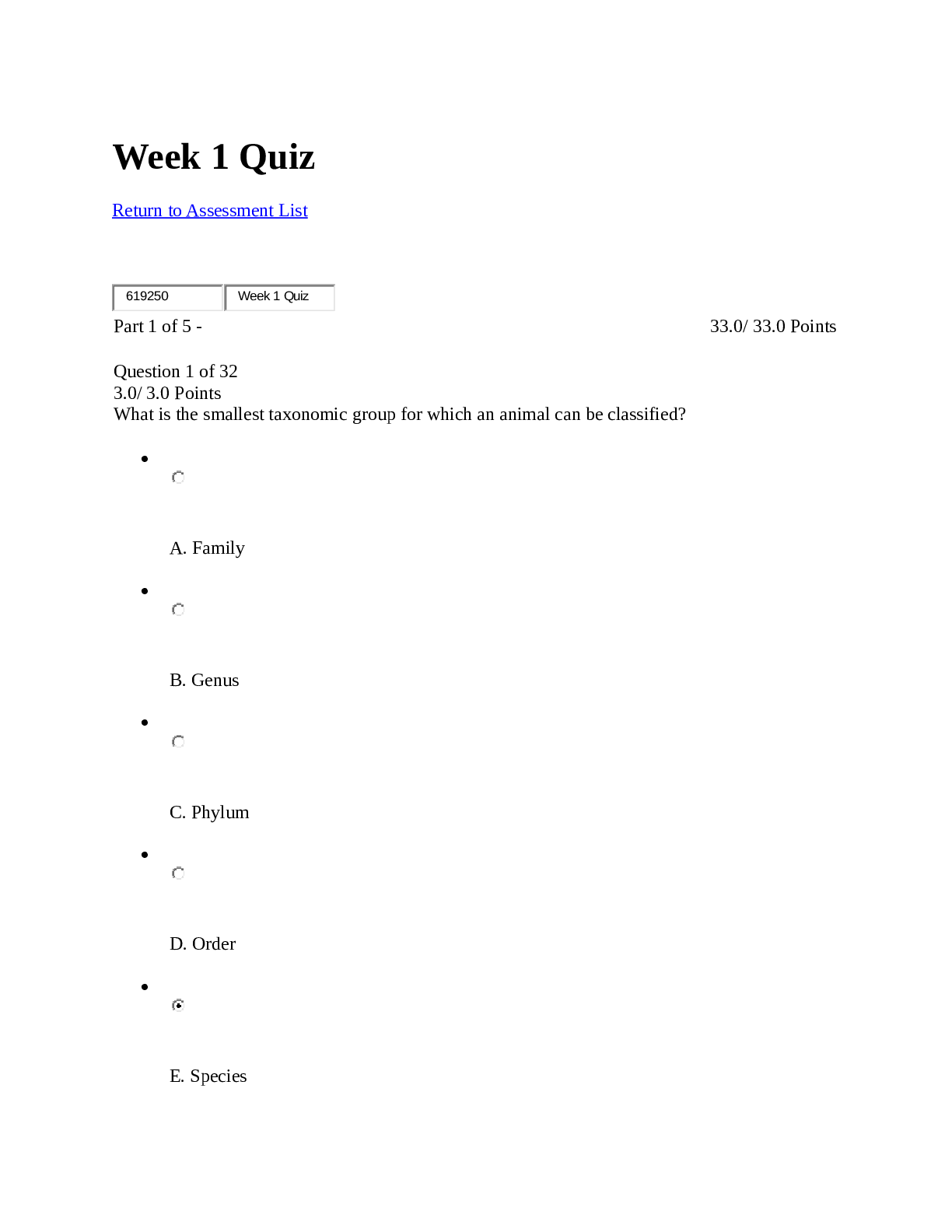
Buy this document to get the full access instantly
Instant Download Access after purchase
Add to cartInstant download
Reviews( 0 )
Document information
Connected school, study & course
About the document
Uploaded On
Feb 23, 2021
Number of pages
24
Written in
Additional information
This document has been written for:
Uploaded
Feb 23, 2021
Downloads
0
Views
45

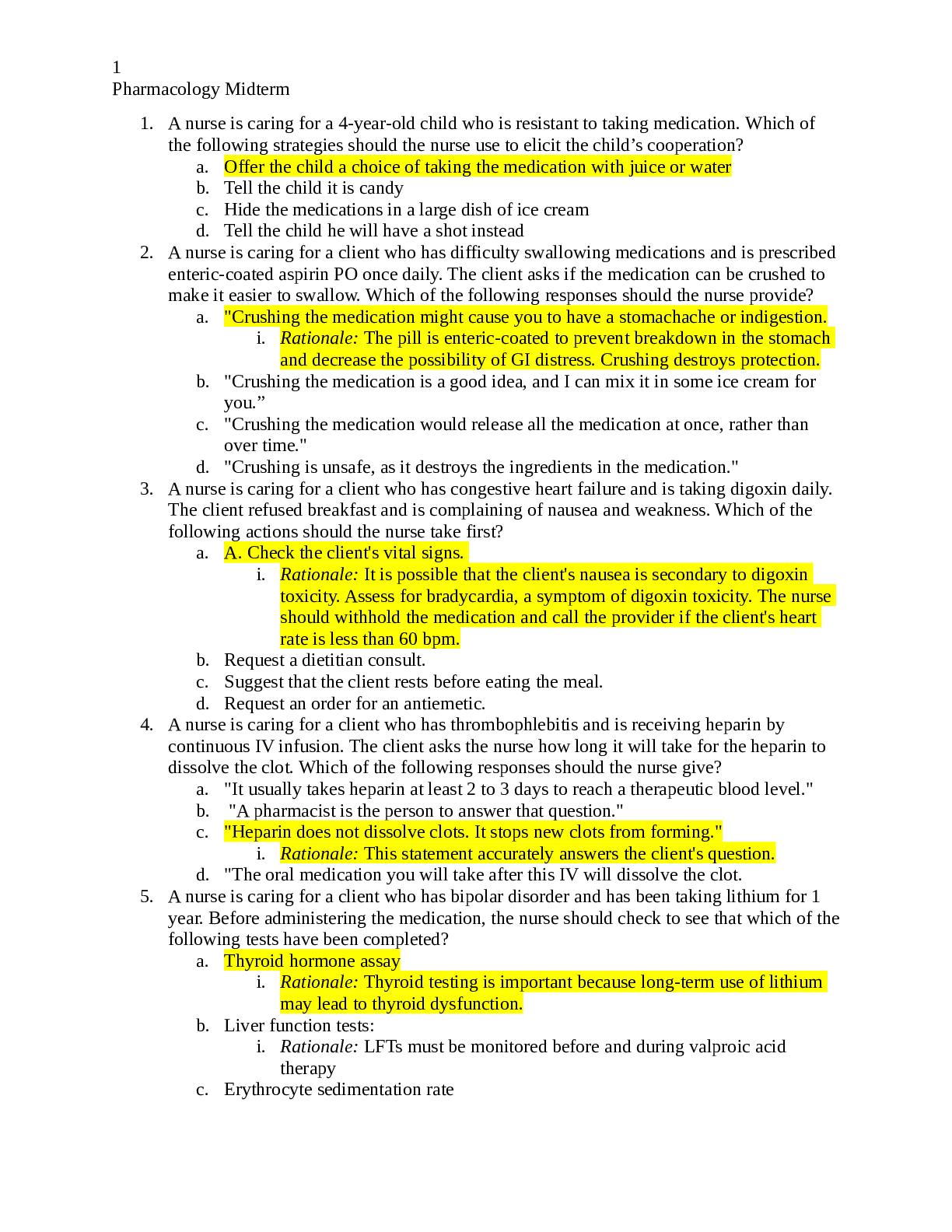
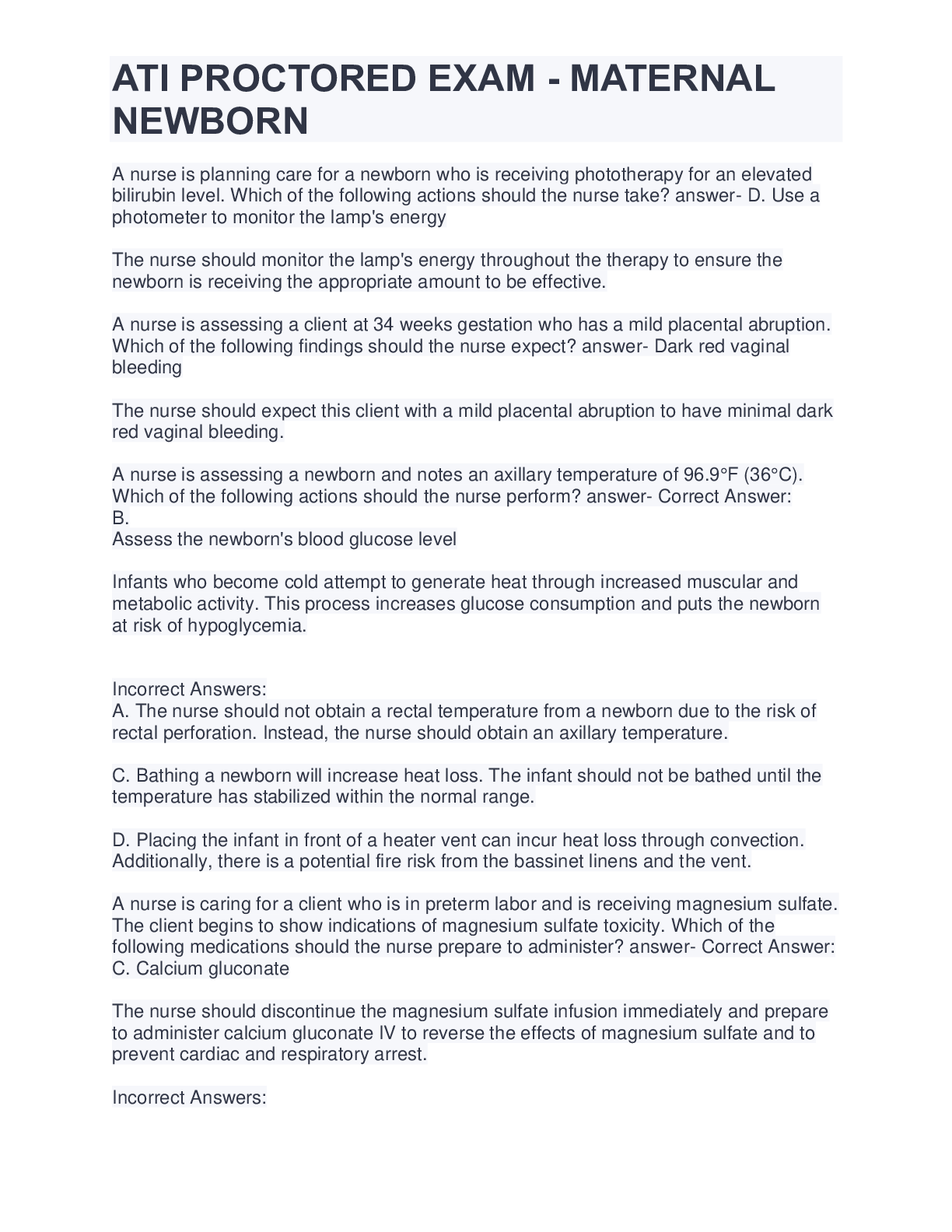

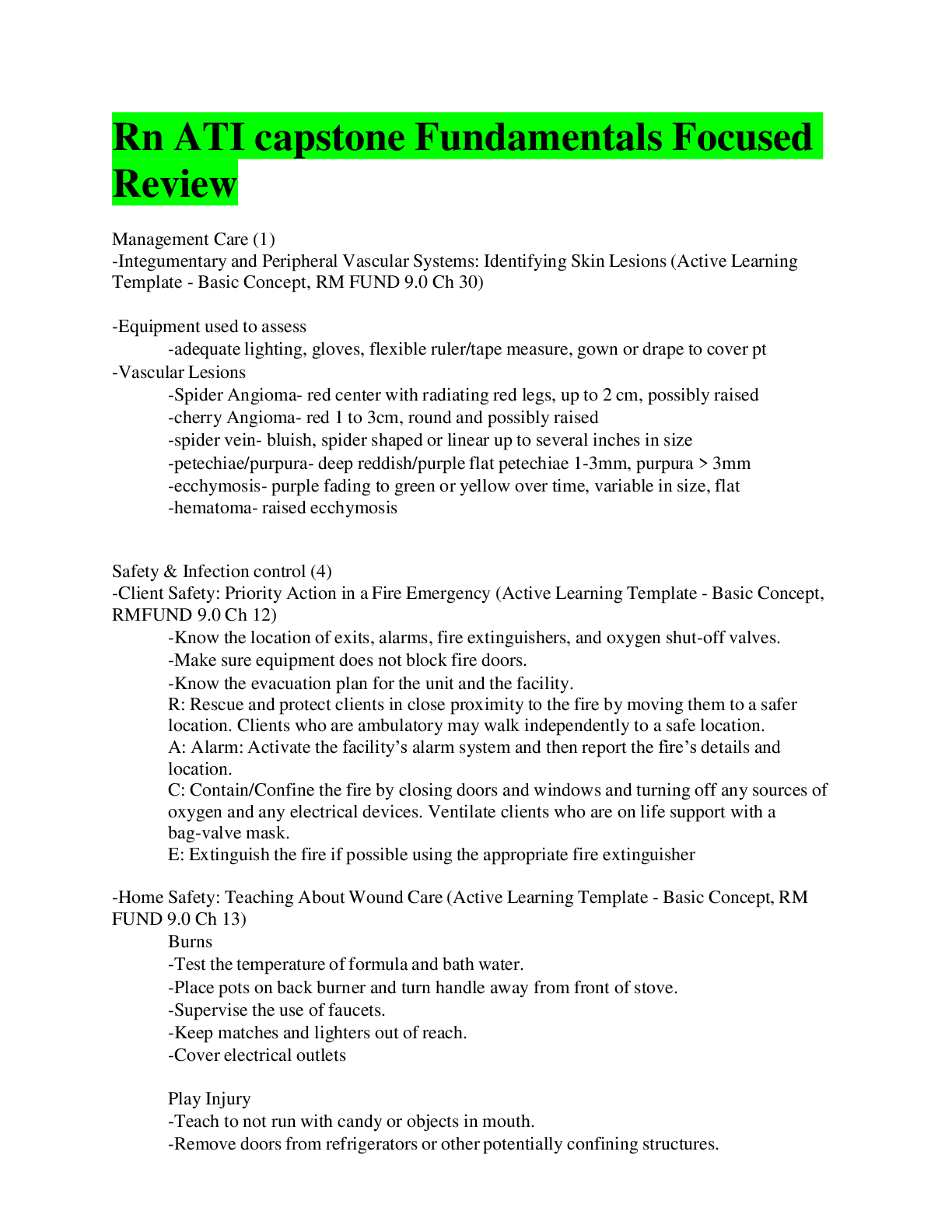
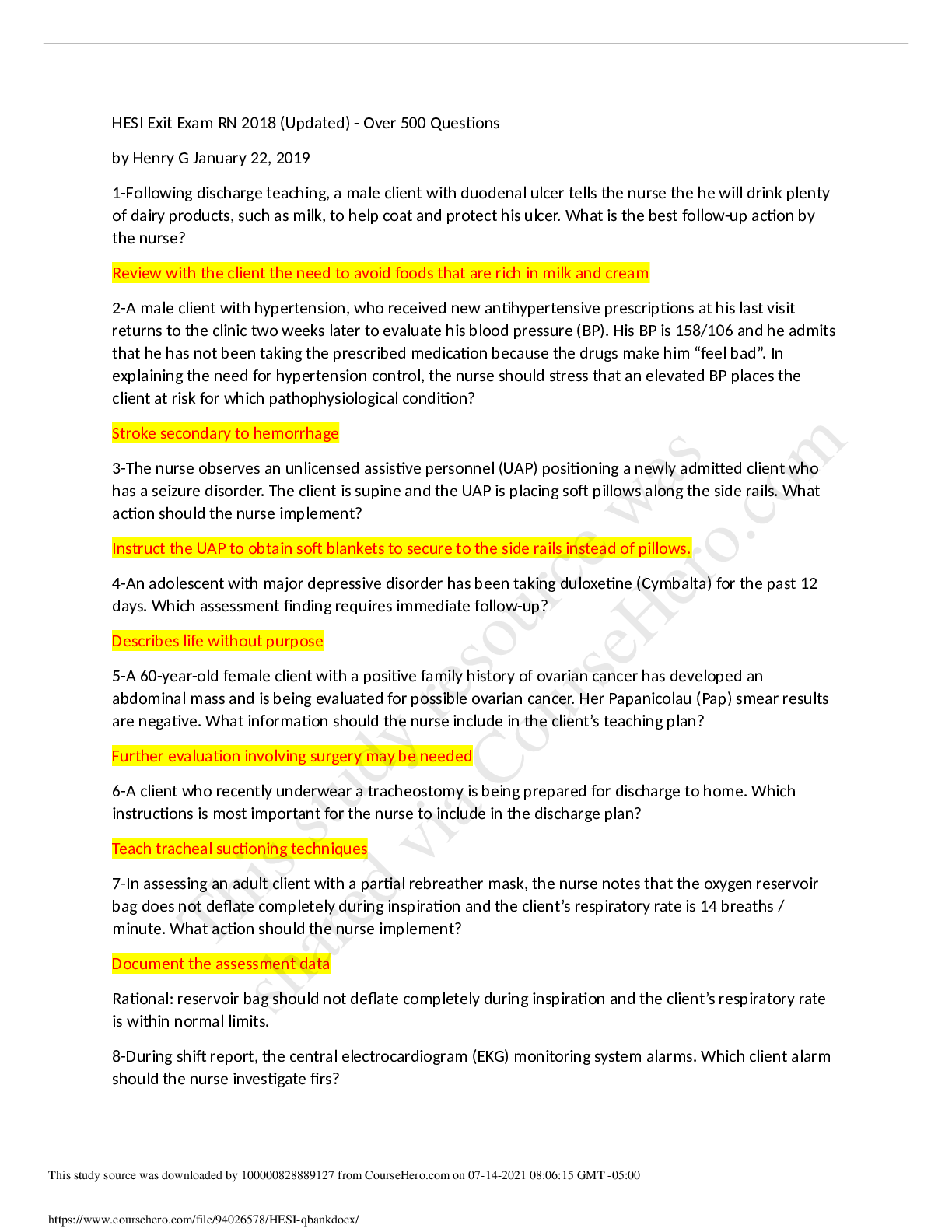

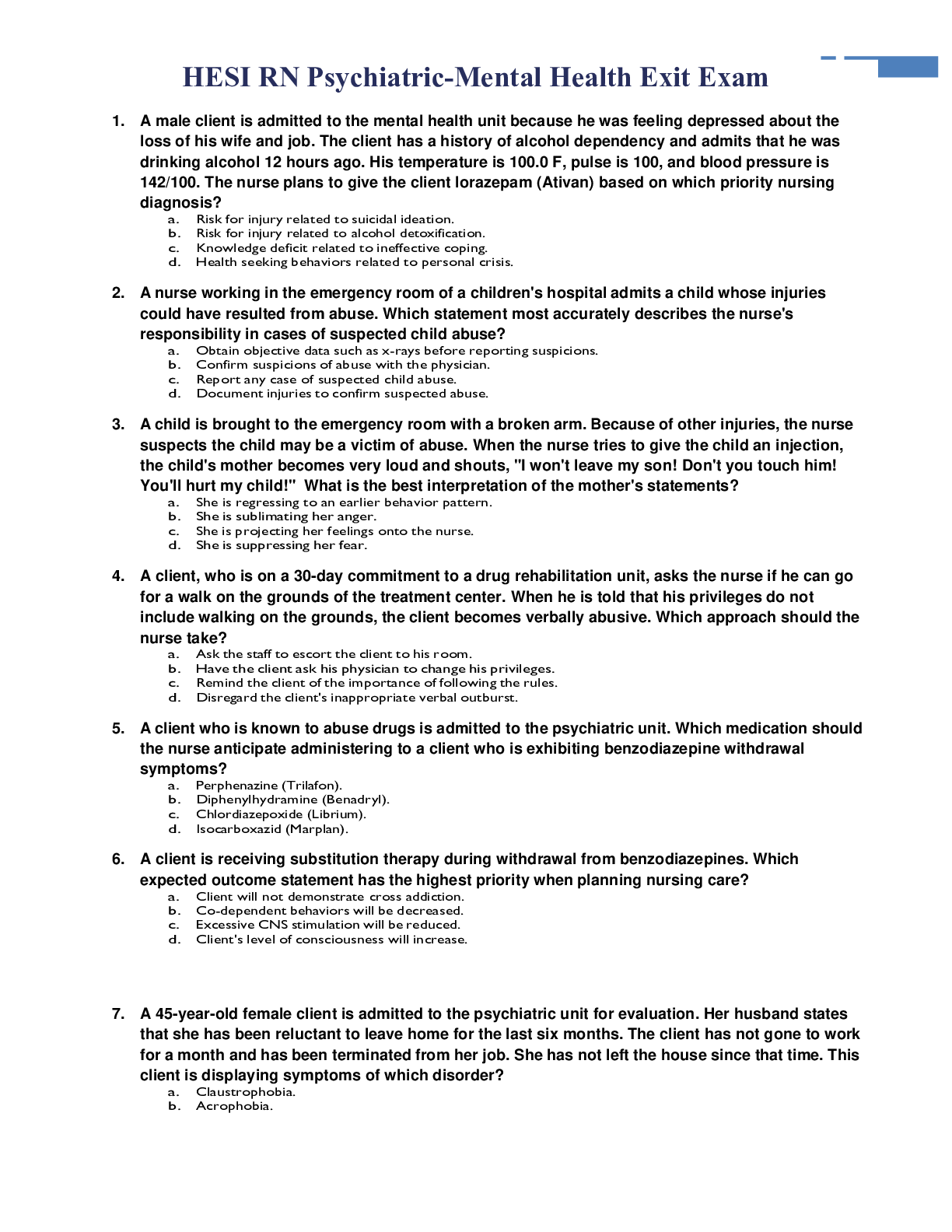
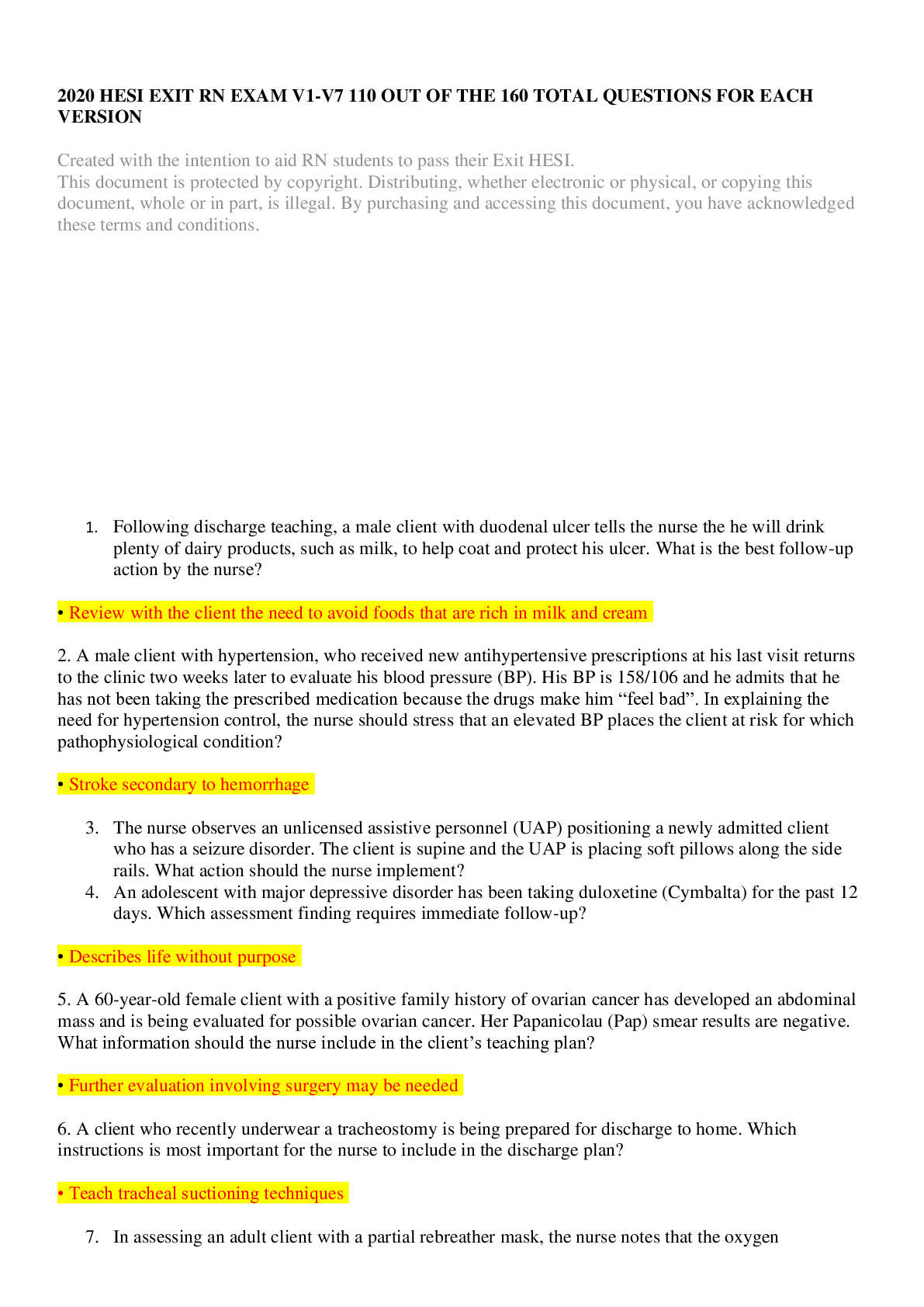


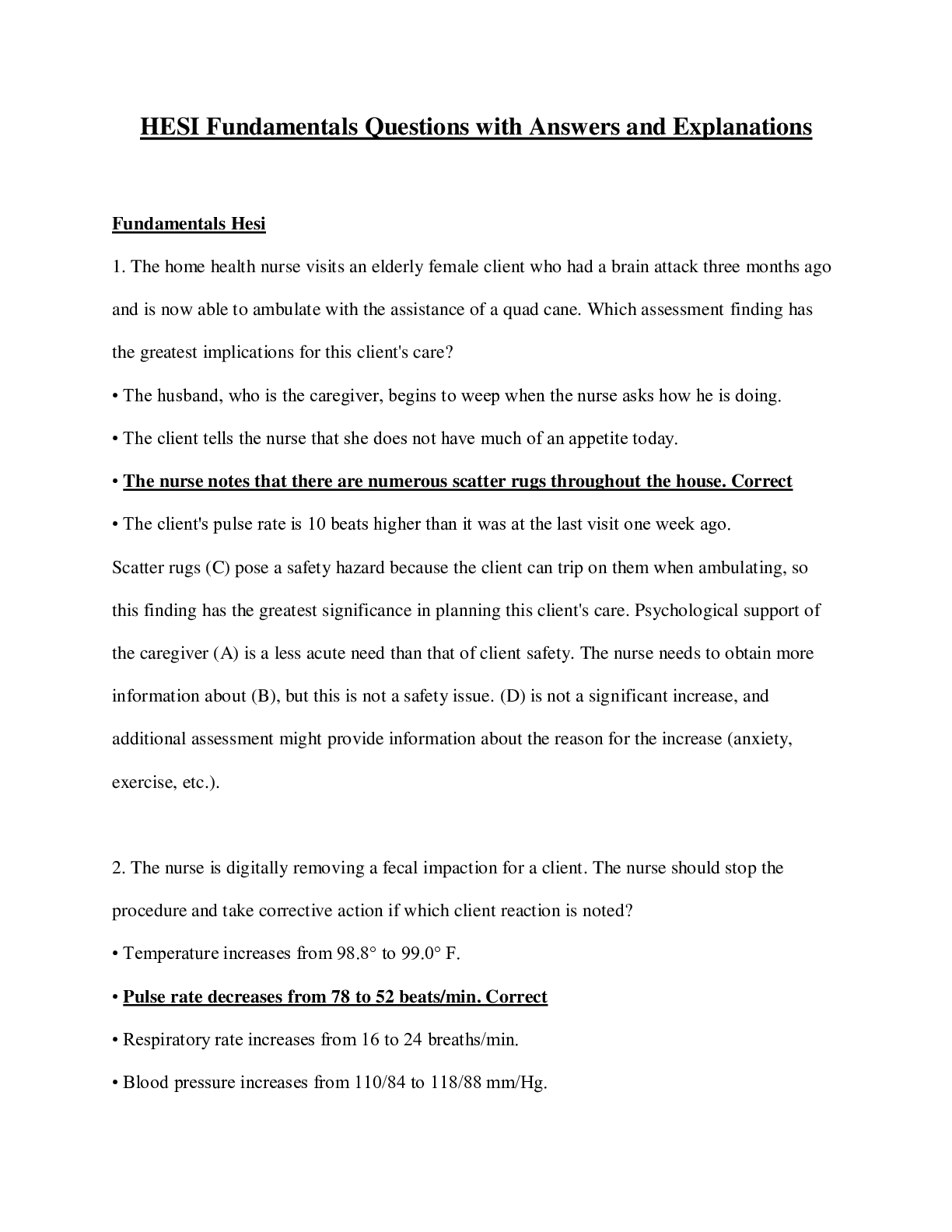

.png)
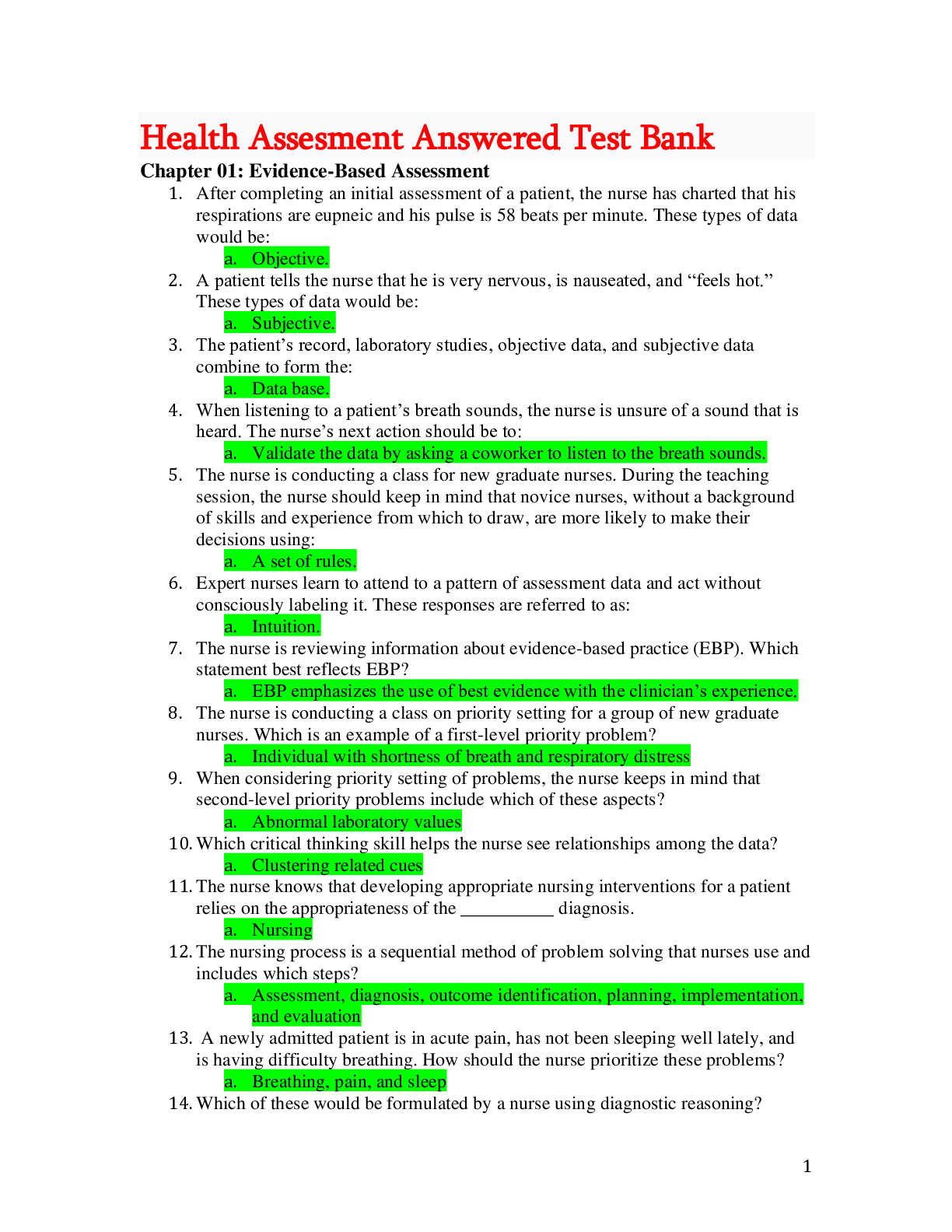
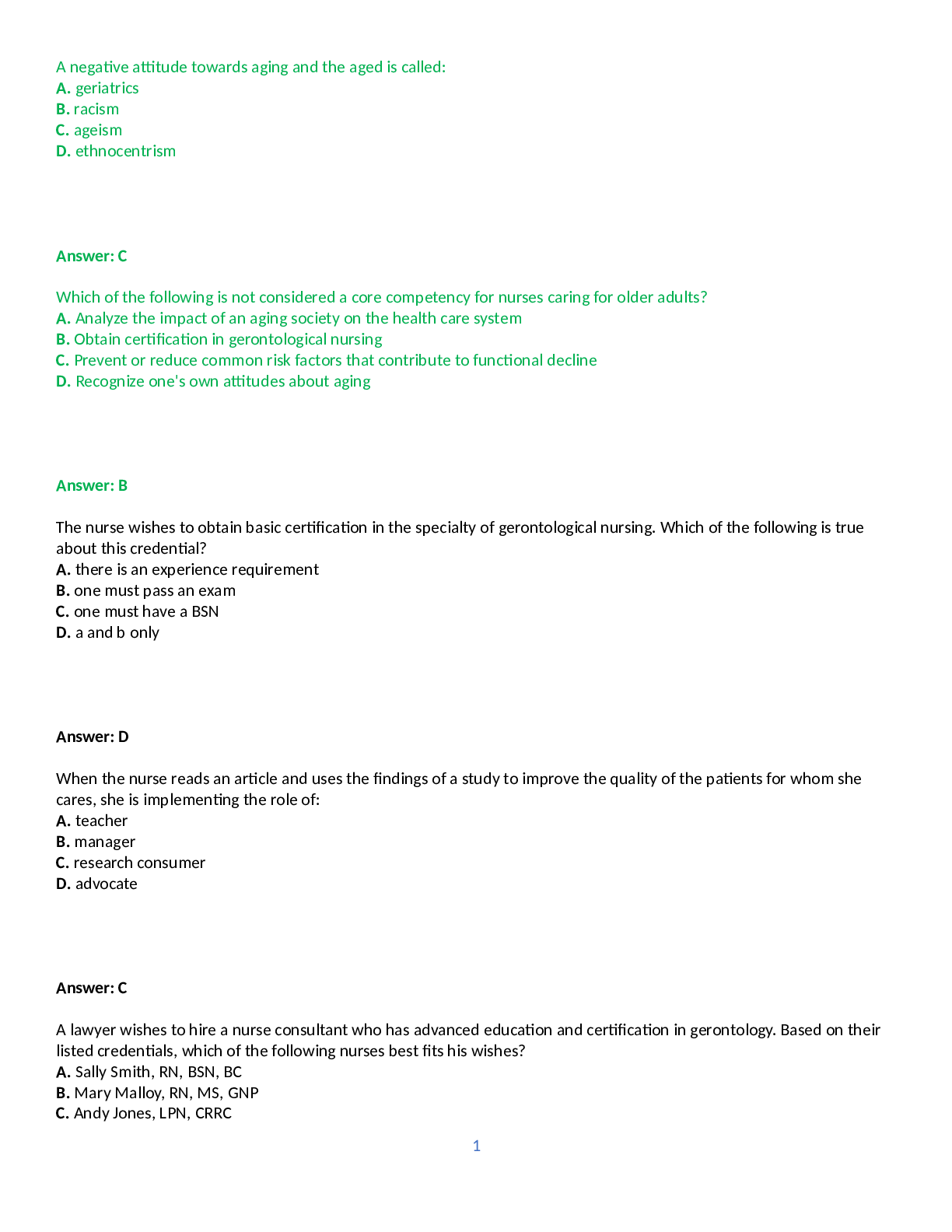
.png)


